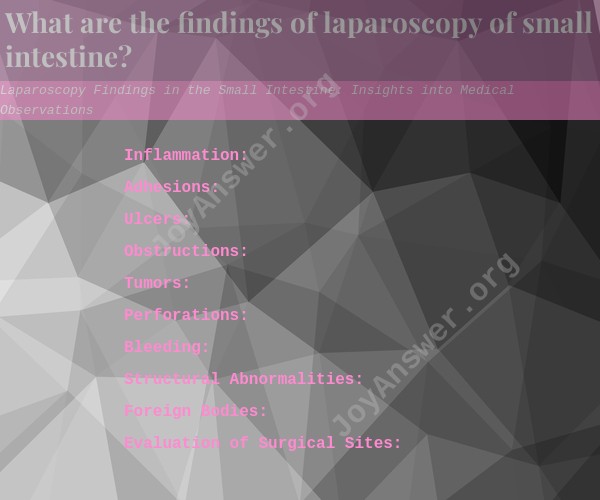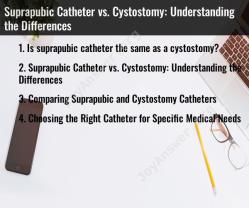What are the findings of laparoscopy of small intestine?
Laparoscopy of the small intestine, also known as small bowel laparoscopy, is a minimally invasive surgical procedure used to visually inspect and diagnose issues within the small intestine. During the procedure, a laparoscope (a thin, flexible tube with a camera) is inserted through small incisions in the abdominal wall, allowing the surgeon to examine the small intestine and surrounding structures. Here are some common findings and observations that may be made during laparoscopy of the small intestine:
Inflammation: Inflammatory conditions of the small intestine, such as Crohn's disease or small bowel diverticulitis, may be identified. Inflammation can cause changes in the appearance of the intestinal tissue.
Adhesions: Adhesions are bands of scar tissue that can form between loops of the small intestine or between the small intestine and other abdominal structures. Laparoscopy can reveal the presence of adhesions, which may be causing pain or bowel obstruction.
Ulcers: Ulcers within the small intestine may be visualized. These ulcers can be due to conditions like peptic ulcer disease or inflammatory bowel disease.
Obstructions: Laparoscopy can help identify obstructions or blockages in the small intestine. These blockages may be caused by tumors, adhesions, or other factors.
Tumors: The presence of tumors, both benign and malignant, can be detected during small intestine laparoscopy. Biopsies may be taken to determine the nature of these growths.
Perforations: Small holes or perforations in the small intestine, which can result from conditions like diverticulitis or trauma, can be identified. These perforations can lead to infection or peritonitis.
Bleeding: Laparoscopy can be used to locate the source of gastrointestinal bleeding within the small intestine. The bleeding may be due to ulcers, vascular abnormalities, or tumors.
Structural Abnormalities: Congenital or acquired structural abnormalities in the small intestine, such as strictures or malrotation, can be visualized and assessed.
Foreign Bodies: In cases where a patient has swallowed a foreign object or there is suspicion of a foreign body in the small intestine, laparoscopy can help locate and, if necessary, remove the object.
Evaluation of Surgical Sites: For patients who have previously undergone abdominal surgery, laparoscopy can be used to assess the condition of surgical sites and evaluate the success of previous procedures.
It's important to note that laparoscopy is a diagnostic tool, and any treatment or intervention required based on the findings will depend on the specific diagnosis. The findings during a small intestine laparoscopy can guide further medical management, surgery, or other interventions to address the underlying issue. The interpretation of laparoscopy findings should be done by a qualified healthcare professional, typically a surgeon or gastroenterologist, who can determine the appropriate course of action.












